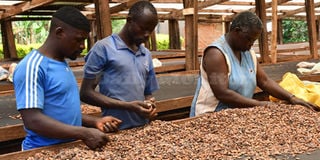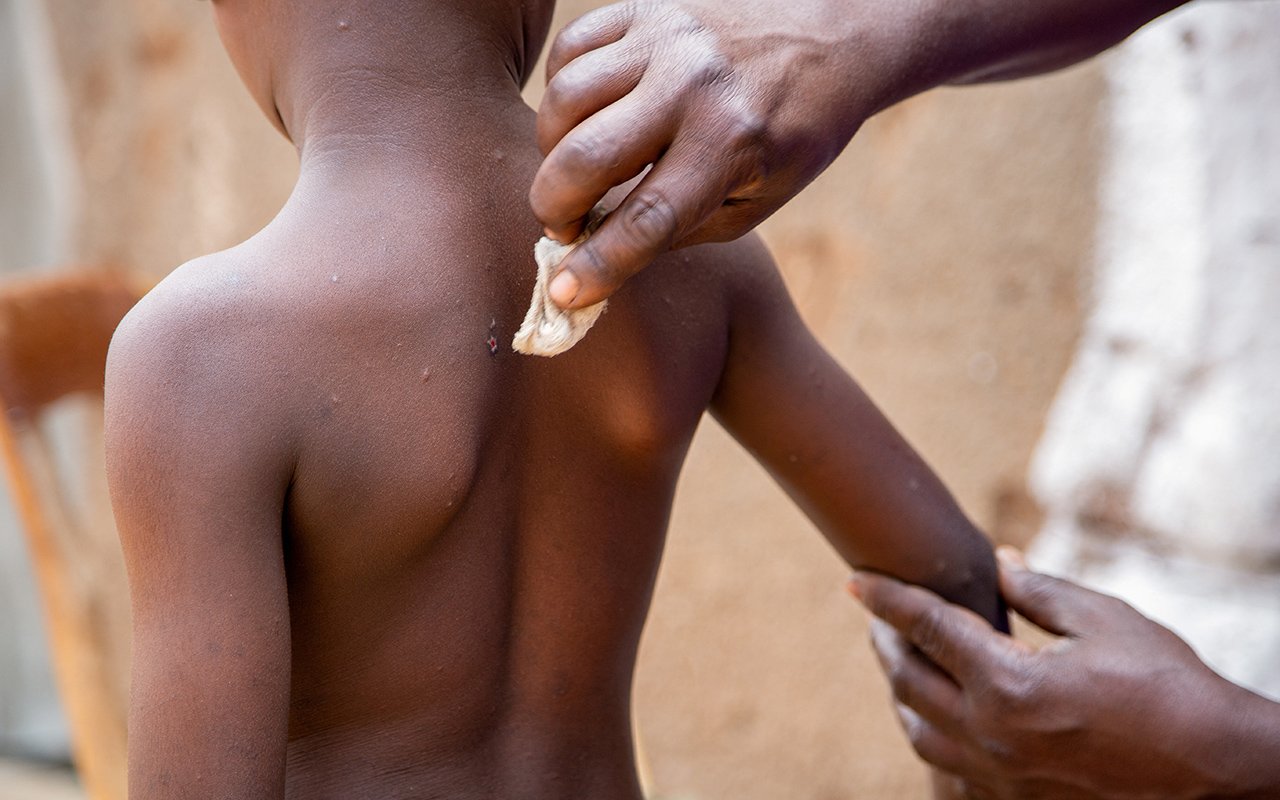Prime
How to plant cocoa for bumper harvest

Farmers sort dry cocoa beans. PHOTO/EDGAR R BATTE
What you need to know:
- In the nursery, cocoa takes between three to six months and then transplanted to the mother garden. A farmer is advised to dig holes that are two feet wide and two feet deep.
From a cocoa farm, comes fresh cocoa beans. They are delivered at the factory, dried then exported to Italy and turned into chocolate.
The story of Icam Chocolate Uganda Limited in Hoima City, located185 kilometres from Kampala, is one of a value chain from the farm to the chocolate lover in markets such as Italy.
The process
Icam operates under an international company consortium that purchases about 28,000 tonnes of cocoa a year from 13 African countries, including Uganda and another eight outside Africa.
“We buy fresh and dry cocoa beans from farmers and then pass them through quality parameters to make sure they are ready for. We export our cocoa beans to Italy where our mother factory is located,” explains Mike Drajole, Icam’s manager in Kitoba Sub country, off Butiaba road in Hoima City.
There are 30 employees that man the processes at the Hoima factory. 20 of them are on permanent employment. It started in 2014 and over the years, the company has expanded into Kikuube, Kagadi, Kibale and Kakumiro as cocoa growing areas.
“In the whole region we deal with up to 2000 farmers that supply us with both fresh and dry cocoa. We started buying fresh cocoa because we want to spare farmers from the stress of drying it,” says Drajole.
How to plant cocoa
The manager explains that cocoa is planted in two ways; through direct seeds and through seedlings transplanted from nursery beds but the best way Icam has discovered is that planting direct cocoa seeds is better.
In the nursery, it takes between three to six months and then transplanted to the mother garden. A farmer is advised to dig holes that are two feet wide and two feet deep.
Then, the holes will be spaced with three metres on either side. “The best time for transplanting the cocoa seedlings is during the first rains and we get the first rains in March, April and May. The beauty with cocoa is that it can be intercropped with any plant, any food crop, even forest trees. In a cocoa plantation we have food crops such as cassava and bananas. They need shade trees,” says Drajole.
After transplanting
Once transplanted, cocoa needs three years to mature. And as you wait for their maturity, you can choose to harvest the plants you have intercropped with.
After harvesting cocoa for the first time, Drajole says farmers can harvest from the same crop every two weeks.
“The cocoa crop can survive for a maximum of 120 years. Therefore, cocoa is an investment for your great grandchildren. It has good returns,” Icam’s manager discloses.
Prices
Icam has a central collection point in Kampala. A kilogramme of cocoa goes for Shs7,600. As such, a 100-bag of fresh cocoa goes for Shs760,000.
If a farmer can have a harvest worth 100 kilogrammes every fortnight, they make a fairly good earning.
“Uganda has very good quality cocoa beans. That is why Italians got interested in it. They carried out research and found out that it is possible to incorporate and get these beans from Uganda to Italy,” Drajole further explains.
Challenges
Are there any challenges you are facing as a company? Asks Seeds of Gold. He elaborates: “We have a gap in extension work between government and private companies. We need collaboration with the local government to work as a team, farmers need knowledge, pesticides and so on. It should not only be the work of a private company. We are looking at closing that gap; the local government should have a contact person.”
He says that from observation, he has seen farmers’ lack financial literacy affect them because when they get a lot of money, they end up misusing it and degenerating back into misery.
“It’s not our joy. We would love to see them building good houses, paying school fees and getting a good life. They lack financial discipline because they even call us so much to give them money in advance.”
The other challenge Drajole spells out is theft; there are many people who always target farmers carrying cocoa, and then the factory stores so that they can rob and take the cocoa.
However, Icam tries to minimise the challenges through building a competent team of employees. With an extension team that will go to the farmers to teach them how to grow cocoa.
Future plan
On Icam’s wish lists is an ambitious plan of doubling, or even tripling the production of through extension work by encouraging farmers to plant more cocoa as well as carrying out cocoa education on media platforms.
Theft
Theft is top among the challenges cocoa farmers are grappled with. There are many people who always target farmers carrying cocoa.





